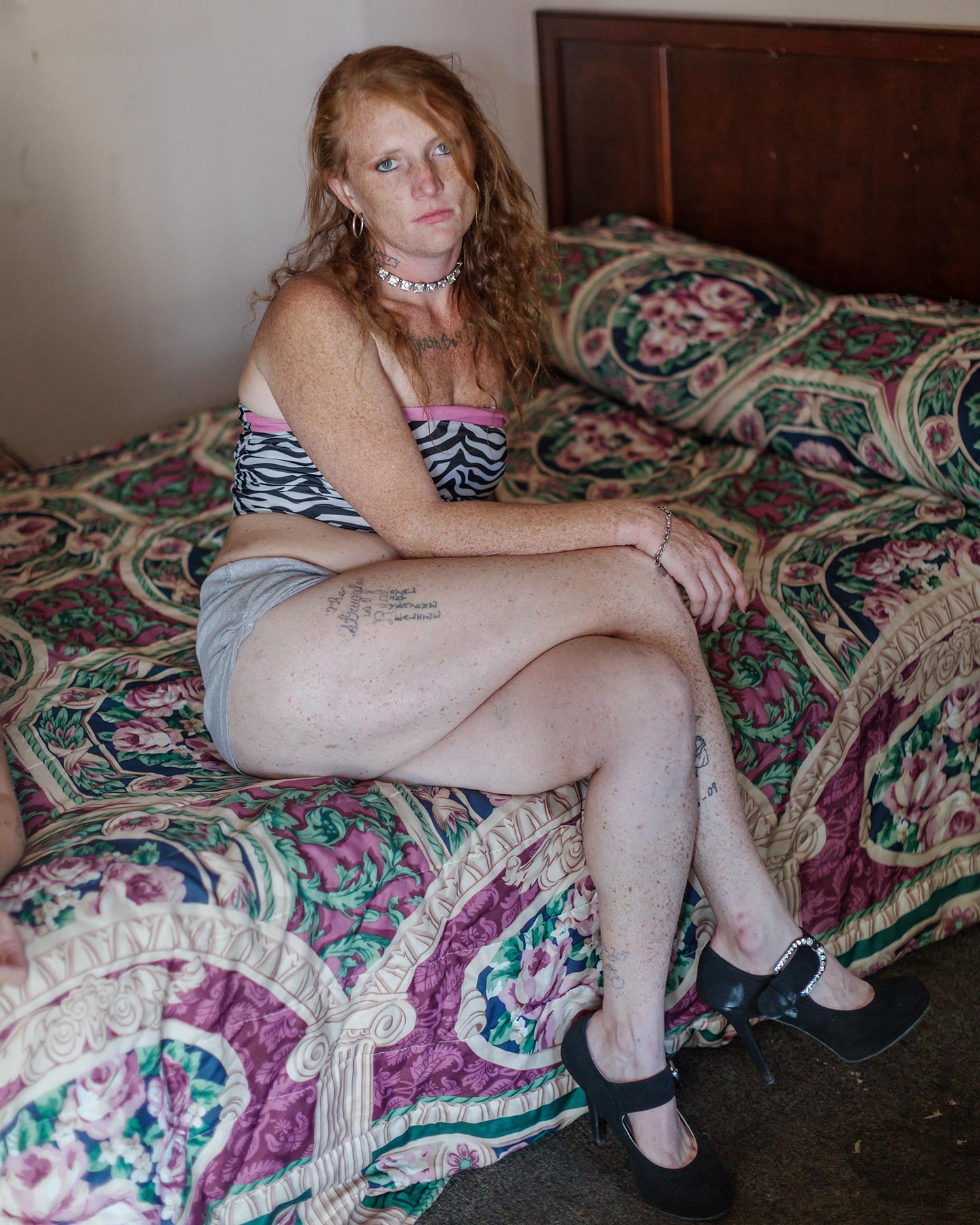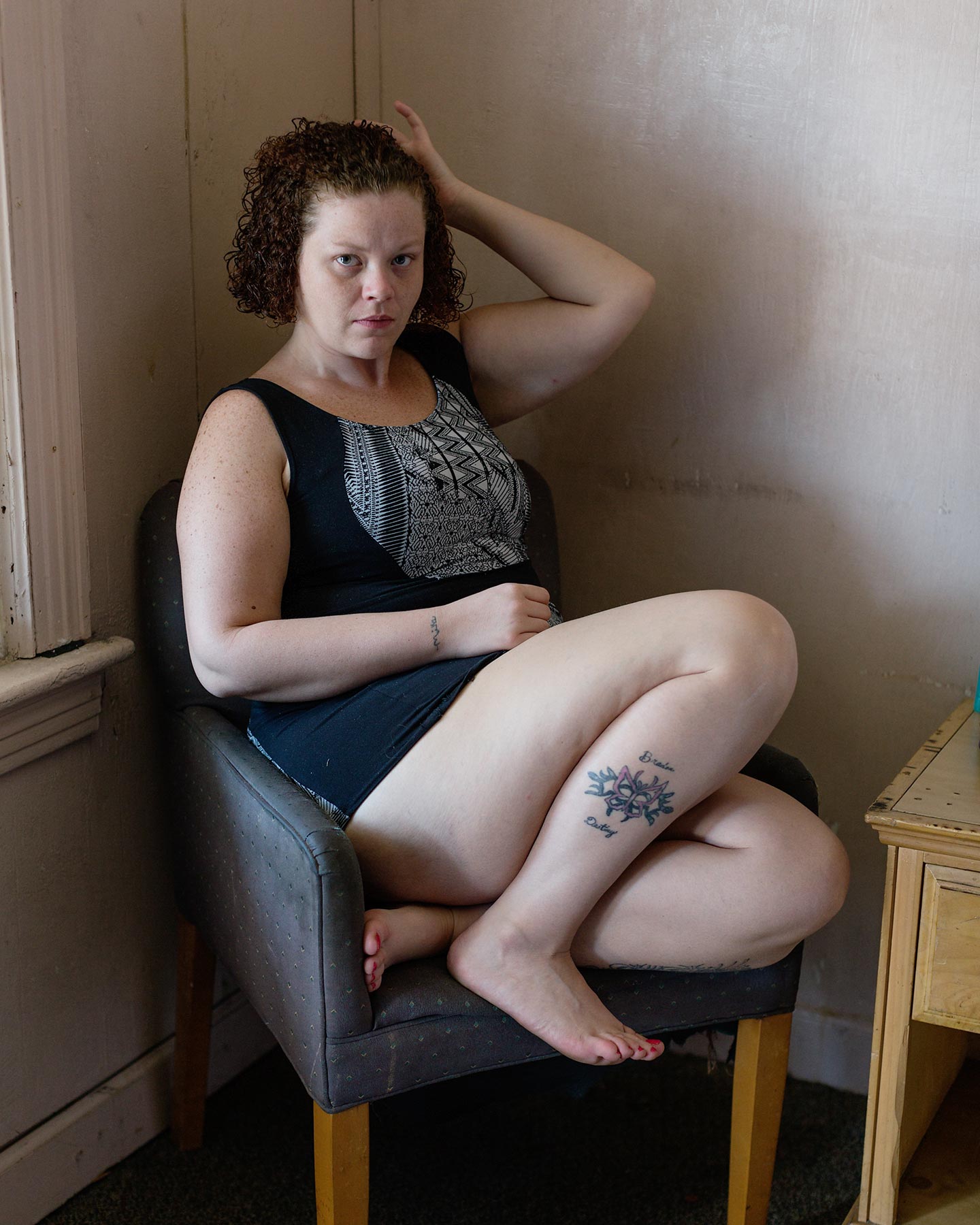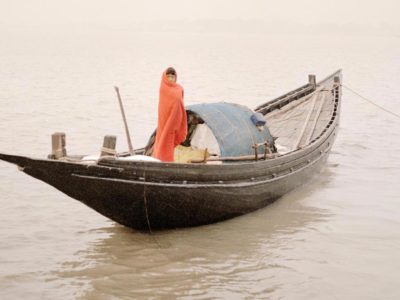FotoFirst — Tamara Reynolds Portrays the Marginalized Gravitating Around an Old Motel

















Premiere your new work on FotoRoom — show us your unpublished project and get featured in FotoFirst.
The Drake by American photographer Tamara Reynolds is a series of staged portraits she took of several marginalized individuals who frequent the area around The Drake, an old motel in Nashville, Tamara’s homecity. Take a look at her powerful portraits and find out more about the project in our interview with her.
Hello Tamara, thank you for this interview. What are your main interests as a photographer?
My main interest as a photographer is getting to know people while photographing them and the things in their life that tell their story.
Please introduce us to The Drake.
The Drake deals with addiction, dominance and dependency. The project started with the dissatisfaction about the gentrification of many neighborhoods in Nashville, my home city, which led me to the historic Drake Motel where I discovered many people living just above survival. The motel is a sad reminder of the glory days of the old Nashville. It is on a main thoroughfare but it is overlooked by everyday commuters inching by in traffic. Its location is possible for the day workers, prostitutes and panhandlers to sustain a life in mainstream society. I see evidence of progress which I fear will mean displacement of the people who live in the area.
Why did you decide to create this project? What impressed you most strongly about your subjects that you were motivated to tell their story?
The people around the motel are subsisting within a society that is typically affected by a culturally endorsed belief that lacks empathy for the marginalized. I was motivated to meet and get to know people who are sometimes viewed as suspect. I could test notions I may hold. I have a deeper appreciation of individuality while at the same time seeing the commonalities we share. I desire to acknowledge what would otherwise be overlooked or misunderstood.
Can you talk a bit about your approach to the work? How well have you got to know your subjects, and how have you interacted with them?
I was able to cultivate friendships with the owners and regulars of a small bar in the area, while I watch from a bar stool transactions taking place around the Drake. I ventured outside to meet and talk with those who were comfortable to allow me into their life. Slowly I gained their trust. I tried to get to the area at least 4 to 5 times a week. Most everyone I photograph I see on a regular basis, and we are friends in the context of the project. There are a few of the guys that I have become quite close to. Everyone willing exchanged numbers, Facebook contact or email addresses with me. That way they could get or stay in touch with me. Also, I wanted to be completely open for them so they could see that I was who I said I was. When I am not photographing I will typically stop to see how everyone is doing. I take prints to all the guys who want one. The last time I was there was about one week ago. I wanted to show everyone the latest iteration of the project’s photobook.
The series mainly consists of portraits. What did you want them to capture about your subjects?
The portraits act more as a statement about dominance and dependency, but I also want the viewer to connect on some level to the humanity of those looking back.
Did you have any specific references or sources of inspiration in mind while working on The Drake?
Because I was working on my thesis at the time I was reading many books and looking at many historic and contemporary photographers’ work. Dorothea Lange was one photographer I was studying as well as looking at Robert Bergman’s A Kind of Rapture. I also started re-reading Now Let Us Praise Famous Men. Also, I found Suzie Linfield’s The Cruel Radiance inspiring and thought-provoking.
How do you hope viewers react to The Drake, ideally?
I hope the viewers spend time with the imagery. Seeing the humanity of people caught in addiction cycle is important, but I also would like to leave the audience with more to contemplate and feel.
What have been the main influences on your photography?
Many things such as painting, theater, movies, music, documentaries, watching a child, smelling bread baking, a walk-in nature influence my photography. I read more non-fiction now, but I have learned that reading poetry is a great tool to a photographic practice.
Who are some of your favorite contemporary photographers?
The list is huge and changes frequently, but the photographers’ work that are my “go-tos” are Emmet Gowin, Mark Steinmetz and Sherron Rupp.
Choose your #threewordsforphotography.
Empathy. Humanity. Ambiguity.
Keep looking...

FotoFirst — Olga Sokal Photographs Lynch, a Small U.S. Town Suffering from the Decline of Coal

Adagio — Laura Ghezzi’s Poetic Images Respond to a Time of Change in Her Life

Jakob Ganslmeier Portrays Former Neo-Nazis Who Are Removing Their Nazi-Inspired Tattoos

FotoFirst — Michael Swann’s Series Noema Is Inspired by (Alleged) Apparitions of the Virgin Mary

In His Series Cicha Woda, Piotr Pietrus Collects Mundane Observations of Reality

Mirjana Vrbaski Shares Her Minimalist Portraits of Women from Her Series Verses of Emptiness

Giulio Di Sturco Captures the Alarming Conditions of the Ganges River in Stunning Photographs




